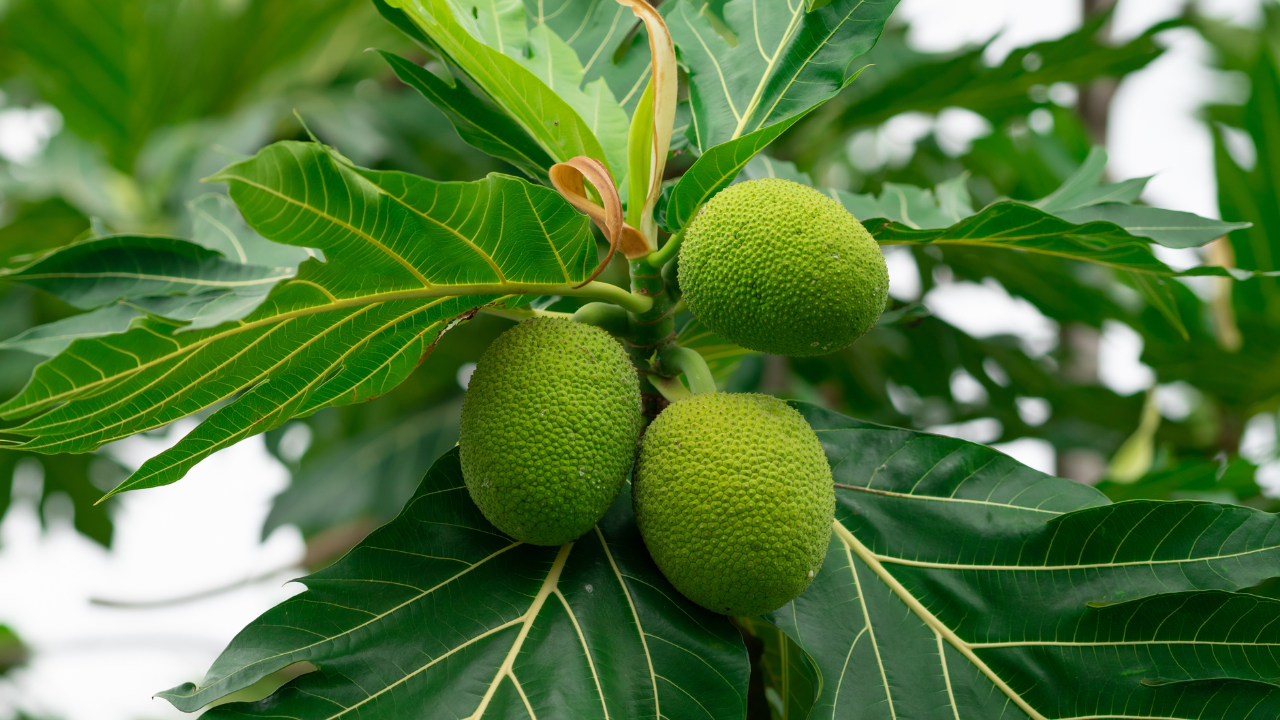Nestled in the heart of Hawaiian culture lies the ‘ulu plant, also known as the breadfruit tree. This remarkable plant holds a rich history and profound meaning for the people of Hawaii. From its introduction to the islands centuries ago to its enduring symbolism today, the ‘ulu remains a testament to the deep connection between the Hawaiian people and the land they call home.
A Historical Journey: The ulu plant has a fascinating history that dates back to the voyages of Polynesian settlers who first arrived in Hawaii. These seafaring explorers brought the breadfruit tree with them, recognizing its immense value as a source of sustenance. The plant thrived in the fertile Hawaiian soil and quickly became a staple in the islands’ diet.
For generations, Hawaiians cultivated and nurtured the ‘ulu plant, utilizing its versatile fruit in various ways. From roasting and boiling the breadfruit to creating delectable dishes like poi, the plant provided nourishment for the Hawaiian people. My parents had a big, beautiful ‘ulu tree in their yard, and tons of people would knock on their door asking if they could harvest the fruit. ‘Ulu is hard to come by nowadays. It’s a very messy tree, but the leaves are beautifully shaped.
A Culinary Revival: In recent years, there has been a revival in the use of ‘ulu in local cuisine and snack foods. Many popular chefs are incorporating ‘ulu into their Pacific fusion dishes, showcasing the versatility of the fruit. Just last week, one of our friends gave Mike and me a bag of handmade ‘ulu chips with sea salt. They were like thick potato chips but tasted so much better—ONO! This modern resurgence of ‘ulu highlights how deeply embedded it remains in Hawaiian culture, not only as a historic staple but as a contemporary culinary treasure.
Meaning and Symbolism: To Hawaiians, the ‘ulu plant holds deep cultural significance, encompassing a range of meanings that reflect their values and way of life. First and foremost, the ulu symbolizes abundance. The tree’s ability to bear copious amounts of fruit represents the abundance of nature and the land’s generosity.
Beyond its material importance, the ‘ulu is also associated with spiritual and community values. It embodies the concept of sharing and the spirit of aloha, emphasizing the importance of nurturing and supporting one another. The ‘ulu serves as a reminder of the interconnectedness between people and their environment, fostering a sense of unity and gratitude.
Cultural Practices and Traditions: The ‘ulu plant plays a prominent role in various Hawaiian customs and traditions. It is often a ceremonial gift, representing prosperity and good fortune. The ‘ulu may be given on special occasions, such as weddings, blessings, or moving into a new home, to symbolize a fruitful and prosperous journey in life.
The ‘ulu plant has also become popular in Hawaiian artwork and quilts. Many people choose to have paintings, prints, or even quilts adorned with the image of the breadfruit plant in their homes, as it’s a visual representation of the values the ‘ulu embodies. Additionally, the ‘ulu holds significance in the practice of hula, the traditional Hawaiian dance. The tree’s swaying branches and the motion of its leaves are often incorporated into hula performances, further enhancing the connection between the Hawaiian people and the natural world.
Preserving the Legacy: Despite the passage of time, the ‘ulu plant’s cultural importance has endured. Today, efforts are being made to preserve and revive the ulu’s presence in Hawaiian communities. Local organizations and individuals are working together to cultivate ulu groves, educate others about its significance, and integrate the plant into culinary and cultural practices.
The ‘ulu plant serves as a poignant symbol of Hawaiian heritage, resilience, and respect for the environment. Its story continues to inspire and remind us of the deep-rooted traditions and values that have shaped the Hawaiian way of life for generations. As the ulu’s legacy is preserved and celebrated, its symbolism will continue to inspire and resonate with the Hawaiian people, ensuring that its significance remains firmly rooted in the cultural fabric of Hawaii.

 Facebook
Facebook
 X
X
 Pinterest
Pinterest
 Copy Link
Copy Link


